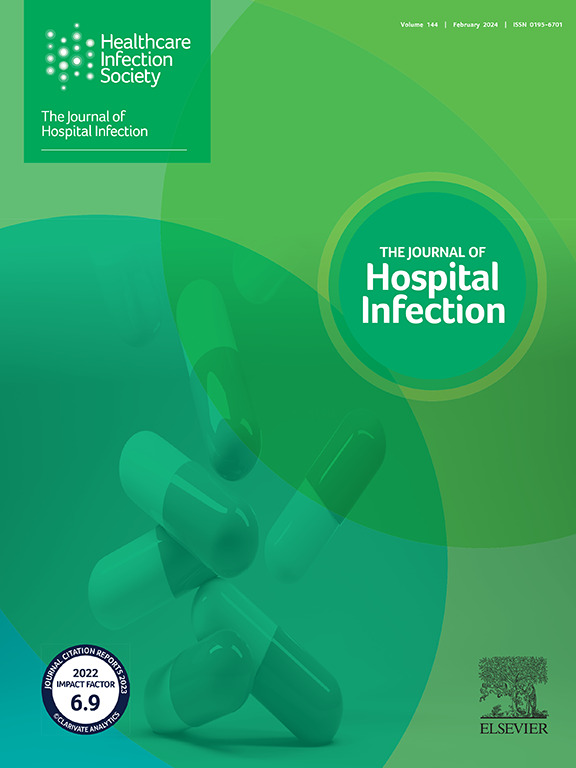Central- and peripheral-line-associated bloodstream infections in Victorian neonatal intensive care units: findings from a comprehensive Victorian surveillance network, 2008–2024
IF 3.9
3区 医学
Q1 INFECTIOUS DISEASES
引用次数: 0
Abstract
Background
Neonates face a high risk of healthcare-associated bloodstream infections, leading to increased morbidity and mortality. Effective surveillance is crucial for safe neonatal care and infection prevention.
Aim
To evaluate infection trends, pathogen distribution and antimicrobial resistance patterns in central- and peripheral-line-associated bloodstream infections (CLABSIs and PLABSIs) in Victorian Level 6 neonatal intensive care units between 1st July 2008 and 30th June 2024.
Methods
Data were collected by the Victorian Healthcare Associated Infection Surveillance System Coordinating Centre using Centers for Disease Control and Prevention National Healthcare Safety Network guidelines. A retrospective data analysis of prospectively collected data was conducted to examine infection epidemiology.
Findings
Overall, 581 neonates developed CLABSIs or PLABSIs, corresponding to a mean CLABSI rate of 2.26 per 1000 central-line-days and a mean PLABSI rate of 0.60 per 1000 peripheral-line-days. The median age at diagnosis of all events was 16 days (interquartile range 9–35 days). No trends were observed in CLASBI or PLABSI rates over the study period. However, an increasing trend in CLABSI rates [incidence risk ratio (IRR) 1.04, 95% confidence interval (CI) 1.00–1.07; P=0.043] and a decreasing trend in PLABSI rates (IRR 0.95, 95% CI 0.92–0.99; P=0.021) were noted among neonates with birth weight ≤750 g. The most frequently reported organisms were coagulase-negative staphylococci, responsible for 44.0% of CLABSIs and 39.5% of PLABSIs.
Conclusion
Neonatal intensive care units in Victoria maintained low CLABSI and PLABSI rates over the study period. Higher infection rates in low-birthweight neonates emphasize the need for targeted infection prevention strategies for this vulnerable population.
维多利亚州新生儿重症监护病房的中央和外周血管相关血流感染:2008-2024年维多利亚州综合监测网络的发现
背景:新生儿面临着与医疗保健相关的血液感染的高风险,导致发病率和死亡率增加。有效的监测对于安全的新生儿护理和感染预防至关重要。目的:本研究旨在评估2008年7月1日至2024年6月30日期间维多利亚州6级新生儿重症监护病房中央线和外周线相关血流感染(CLABSIs和PLABSIs)的感染趋势、病原体分布和抗菌药物耐药性模式。方法:数据由维多利亚州卫生保健相关感染监测系统协调中心根据CDC国家卫生保健安全网络指南收集。对前瞻性收集的资料进行回顾性资料分析,以检查感染流行病学。结果:总体而言,581名新生儿发生CLABSI或PLABSI,对应于CLABSI的平均发生率为每1000中心线日2.26例,平均PLABSI发生率为每1000外周线日0.60例。所有事件诊断时的中位年龄为16天(IQR 9-35天)。在研究期间未观察到CLASBI或PLABSI发生率的趋势。然而,出生体重≤750g的新生儿CLABSI发生率呈上升趋势(IRR: 1.04, 95% CI: 1.00, 1.07, p = 0.043), PLABSI发生率呈下降趋势(IRR: 0.95, 95% CI: 0.92, 0.99, p = 0.021)。最常报道的微生物是凝固酶阴性葡萄球菌,占CLABSIs的44.0%和PLABSIs的39.5%。结论:维多利亚州nicu在研究期间保持了较低的CLABSI和PLABSI率。低出生体重新生儿较高的感染率强调需要针对这一弱势群体制定有针对性的感染预防战略。
本文章由计算机程序翻译,如有差异,请以英文原文为准。
求助全文
约1分钟内获得全文
求助全文
来源期刊

Journal of Hospital Infection
医学-传染病学
CiteScore
12.70
自引率
5.80%
发文量
271
审稿时长
19 days
期刊介绍:
The Journal of Hospital Infection is the editorially independent scientific publication of the Healthcare Infection Society. The aim of the Journal is to publish high quality research and information relating to infection prevention and control that is relevant to an international audience.
The Journal welcomes submissions that relate to all aspects of infection prevention and control in healthcare settings. This includes submissions that:
provide new insight into the epidemiology, surveillance, or prevention and control of healthcare-associated infections and antimicrobial resistance in healthcare settings;
provide new insight into cleaning, disinfection and decontamination;
provide new insight into the design of healthcare premises;
describe novel aspects of outbreaks of infection;
throw light on techniques for effective antimicrobial stewardship;
describe novel techniques (laboratory-based or point of care) for the detection of infection or antimicrobial resistance in the healthcare setting, particularly if these can be used to facilitate infection prevention and control;
improve understanding of the motivations of safe healthcare behaviour, or describe techniques for achieving behavioural and cultural change;
improve understanding of the use of IT systems in infection surveillance and prevention and control.
 求助内容:
求助内容: 应助结果提醒方式:
应助结果提醒方式:


